Pogie Awards 2015: The Year’s Most Brilliant Ideas in Tech
Good evening, ladies and gentlemen! Please find your seats and silence your phones: It’s time for the 11th annual Pogie Awards!

This time of year, the world is teeming with articles that name the best products of 2015 — but the Pogie Awards are different.
These are awards for the best feature ideas in products — even if the products themselves aren’t anything to email home about. The point is to celebrate the inspiration that struck some designer or engineer and to hail that idea’s successful journey out of committee, past the lawyers, and into the hands of the public.
So what were the best ideas in tech of 2015? The envelopes, please!
The Frozone Card Award
If you own a credit card, then you’ve almost certainly experienced an “Oh, dang it!” moment. That’s when you suddenly realize that you don’t know where your card is.
Each time, you’re faced with a stressful dilemma. Do you call the bank and cancel the card, in fear that someone will find it and rack up charges on it — and then deal with the headache of getting a replacement card with a new number? Or should you just sit tight, hoping that it turns up?
The clever folks at Discover now offer a third option: Freeze the card. (You can do that using the Discover Card app or by calling an 800 number.) When you freeze the card, nobody can charge things on it, exactly as though you’d canceled the card. Yet, conveniently enough, recurring charges — such as monthly subscriptions for Spotify, Netflix, or whatever — keep going through automatically.
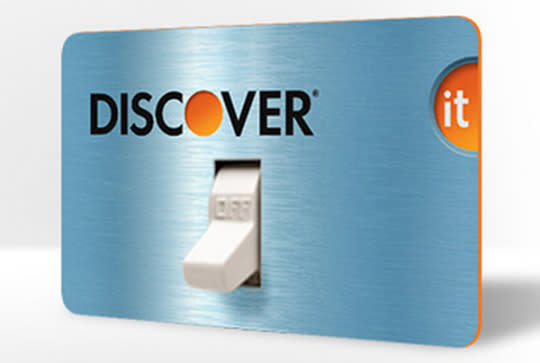
And if the card does show up, you can just unfreeze it; no harm done, no new card needed.
Freezing is free, it’s instantaneous, and you can do it as often as you like.
The Phone Juice Award
Some batteries are more important than others. You care a lot, for example, about your car’s battery and your phone’s battery.
Well, if your car won’t start, you use jumper cables. So why can’t someone invent something similar for our phones?
Someone has: The Juicer is a tiny, keychainable cable that connects two Android phones or tablets and lets one charge from the other. You can imagine how handy that’d be when you need just enough juice to send a critical text or check for an important email. Such a great idea!
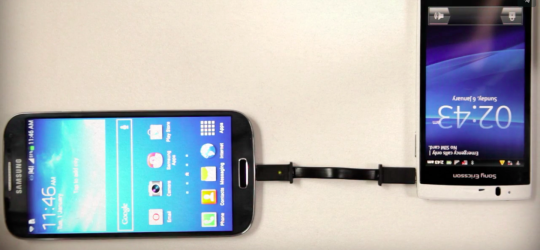
Unfortunately, the general public didn’t agree (or didn’t know about it). The Juicer was the object of a crowdfunding campaign on Indiegogo, seeking $65,000 from the public to go into production; the adoring masses ponied up only $8,000, so the campaign failed.
But remember: The Pogies aren’t about products, they’re about ideas, and this one was kind of cool.
The Inkjet Friendliness Award
You know how the inkjet industry works, right? The printer itself is relatively cheap, but then they rip you off with obscenely inflated ink prices.
How expensive? A typical inkjet cartridge containing half an ounce of ink costs $32 — which works out to $4,100 a gallon. Not even champagne costs that much.
In 2015, two big inkjet printer companies finally decided to acknowledge their own greed.
Epson, for example, began offering a line of EcoTank printers that don’t accept cartridges at all; instead, you fill up their tanks from a big bottle of ink. You save at least $500 the first year and $750 every two years thereafter. You never have to throw out a perfectly good ink cartridge because one color has run out, and you don’t fill up the landfill with dozens of little plastic cartridges every year.
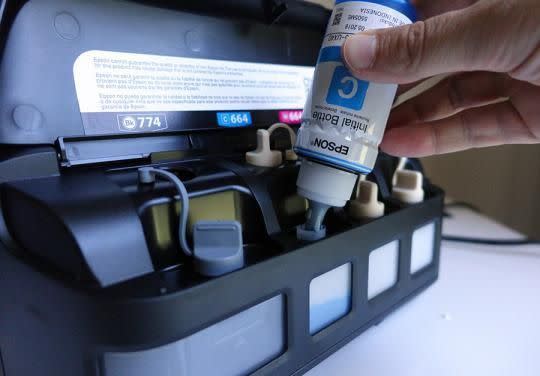
But Epson’s rival HP shares the award this year. Its Instant Ink program treats ink like cellphone plans: You agree to pay $3, $5, or $10 a month for 50, 100, or 300 pages’ worth of ink. (Unused pages roll over to the next month, and you can cancel whenever you want.)
You might wonder why anyone would want to start worrying about their monthly allotment of pages, the way they worry now about their monthly allotment of cellphone minutes. But people who actually sign up for Instant Ink rave about three things:
First, they never have to drive out to buy replacement cartridges; HP detects when your cartridges are running low and ships you replacements automatically.
Second, the price per page (5 cents each, regardless of whether they’re black-and-white or color) is much lower than prints from store-bought ink (15 cents per color page).
Third, each new set of cartridges comes with a prepaid mailer for sending back the empty one, which HP recycles for you.
Overall, it’s cheaper, easier, and better than buying cartridges yourself.
(HP’s Instant Ink program actually launched in 2013, but the Pogie Awards Committee somehow missed it. We must have been busy. So we’re awarding the trophy this year to a truly terrific idea.)
The Both Sides Now Award
The world breathlessly awaits the day when the new USB-C jack becomes the one true cable, a universal charging cord for every brand and model of phone, tablet, and laptop. (You can read more about it here.)
Among USB-C’s virtues: There’s no right side up. You never have that moment of inserting it, realizing you’ve got it upside down, and trying again, as you do with today’s USB.
Until that glorious day arrives, you can charge your non-Apple gadget with a MicFlip cable. It’s the world’s first reversible micro USB connector. This idea, too, had an Indiegogo crowdfunding campaign — but a successful one: The MicFlip is now a shipping $20 product.
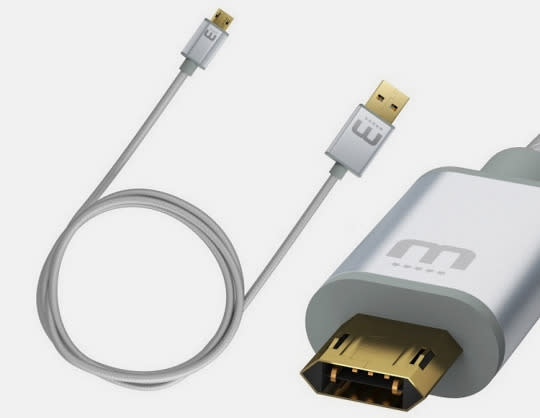
For that, you get a fancy braided-nylon cable with an aluminum shell, gold-plated plugs — and a reversible micro USB end. You can shove it into your phone or tablet either way, without ever getting it wrong.
Tragically, the other end — the one that plugs into your laptop or wall jack — is still a standard USB connector. Contrary to early ads for this thing, it’s not reversible; you can still plug it in the wrong way. But hey: baby steps, right?
The Remote Control Ad Absurdum Award
Last year, in its iOS 8 software for iPhones, Apple introduced a feature called Continuity. It ties your iPhone and Mac together, so that you can make and take calls, or send and receive text messages, on your Mac. In other words, the Mac (or iPad) acts as a sort of big-screened, full-keyboard speakerphone extension for your iPhone.
Originally, to make Continuity work, the phone had to be on the same Wi-Fi network as the Mac or iPad. But this year, in iOS 9, Apple introduced a mind-blowing enhancement to that feature, called Continuity over Cellular.
Now, your phone and Mac don’t have to be on the same Wi-Fi network; you can make or take calls on your Mac or iPad even if your iPhone is somewhere else in the world! Yes, even if you left it at the office or at your buddy’s house. The two are connected via the cellular network.
Making this feature work requires the participation of your iPhone’s cellular provider, and so far, only T-Mobile has it working.
But, still: Adding cellular features to your Mac or iPad even when your phone is across town or across the country? Supercool.
The Everything-Old-Is-New-Again Award
The Chromecast Audio is both a killer idea and a great product.
It’s a little $35 plastic puck that you plug into any old prewireless, pre-Bluetooth audio gadget in your home that has audio inputs (miniplug, optical jack, or RCA jacks) — clock radio, boom box, stereo system, iPhone dock with the now-obsolete 30-pin connector, or whatever. That done, you can send audio to that speaker from your phone.
It’s actually better than a Bluetooth speaker, because you’re sending the audio over Wi-Fi, which has a much better range. And the music sounds better, because it’s not subject to the usual Bluetooth audio compression.
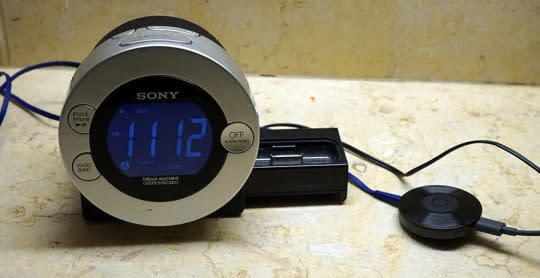
The Chromecast Audio, in other words, serves a real purpose and brings new value to speaker investments you made years ago.
The Pogie Ultimo: The Windows 10 Start Menu
Windows 8 may have been terrible, but the idea behind it wasn’t completely foolish. Microsoft foresaw a world in which computers would have touchscreens, so it created two separate interfaces: one for keyboard/mouse, one for touchscreens.
Unfortunately, in reality that meant twice the learning curve, twice the complexity, and twice the headaches. So the world waited to see how Microsoft could fix Windows’s split personality. Would it abandon the touchscreen-friendly elements? Would it sell two different copies of Windows?
Surprise: Microsoft came up with a solution that pleased almost everyone. It eliminated the touchscreen interface of big, finger-friendly tiles and edge-to-edge, nonoverlapping apps — and it brought back the Start menu.
The left side of that menu works pretty much just as it always has, but the Windows 8 tiles are still here, attached to the right.
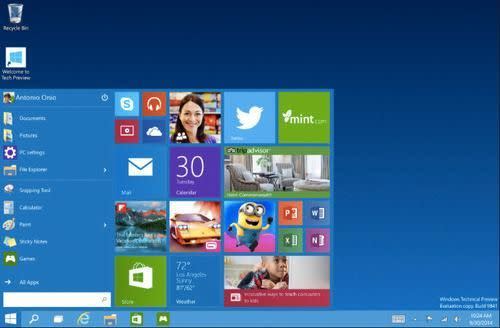
As before, these are live tiles: Many of them display useful information — such as the weather, news, stocks, and your next calendar appointment — without your even having to click.
The Windows 10 Start menu no longer takes over your entire screen, interrupting what you were doing. It behaves, in other words, like a menu. And so Microsoft managed to eliminate the split personality of Windows 8, without losing its touch-friendly features.
That single, critical change brought something to Windows that it had been missing since Windows 7: coherence. And since hundreds of millions of people use Windows, it’s not just a great idea that glows in obscurity; it’s a great idea that brings simplicity, efficiency, and peace to all those hundreds of millions.
It is, therefore, a shoo-in for the big prize: the Pogie Ultimo.
And Good Night!
That concludes tonight’s presentation of the 2015 Pogie Awards. Congratulations to the winners — and to all of us, for being wise enough to embrace genius when we see it.
David Pogue is the founder of Yahoo Tech; here’s how to get his columns by email. On the Web, he’s davidpogue.com. On Twitter, he’s @pogue. On email, he’s poguester@yahoo.com. He welcomes nontoxic comments in the Comments below.
Looking back at 2015 (and looking forward to 2016):

